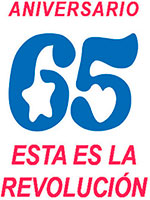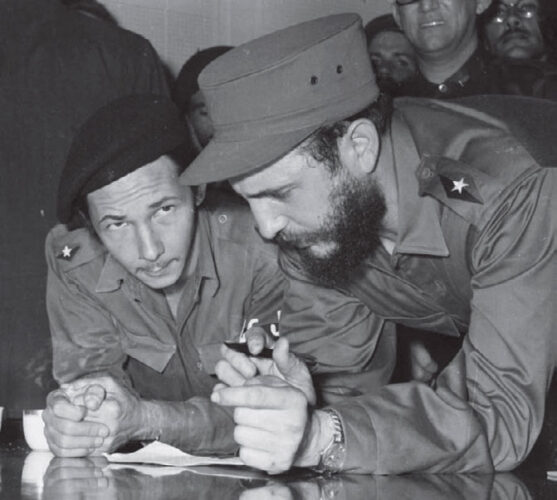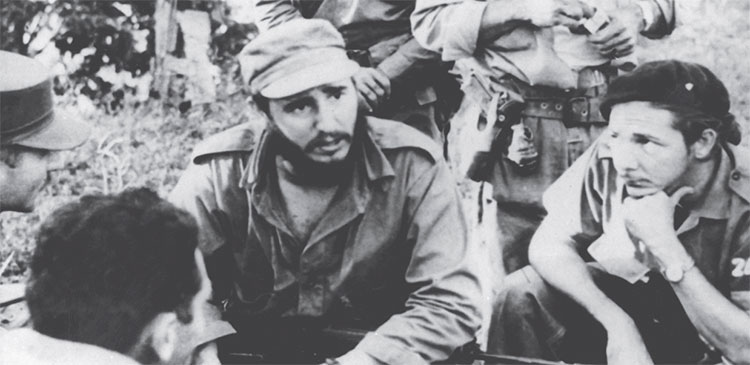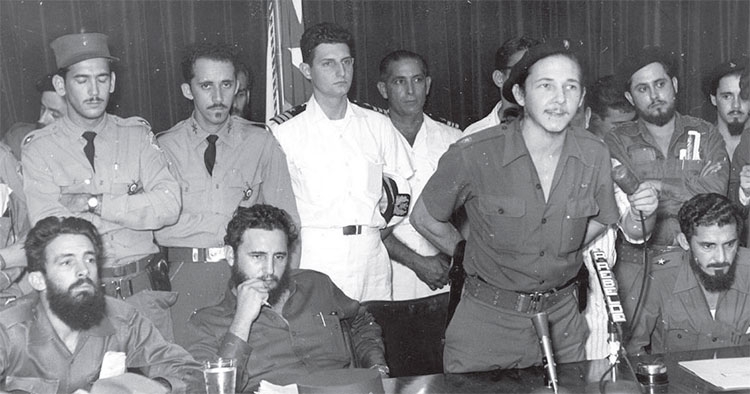 “It is a privilege for me that he is not only an exceptional revolutionary cadre, but also my brother,” Fidel said of Raúl.
“It is a privilege for me that he is not only an exceptional revolutionary cadre, but also my brother,” Fidel said of Raúl.
This confidence was publicly expressed on January 21, 1959, at the large popular rally in front of the Presidential Palace, where a huge crowd gathered to support the application of revolutionary justice against the executioners of the recently defeated regime as part of Operation Truth. There he announced that he had approved the appointment of Raúl as second leader of the “26th” movement. July”.
“I do,” he declared, not because he is my brother – everyone knows how much we hate nepotism – but because I honestly believe he has sufficient qualities to replace me if I were to must die in this fight; because, moreover, he is a comrade with very strong revolutionary convictions, who demonstrated his abilities in this struggle, who was one of those who led the attack on Moncada, who spent two years in prison, who organized the Second Front of Frank País and those who have provided appropriate evidence of their ability as an organizer and leader.”
 Photo: By Fidel Soldado de las Ideas
Photo: By Fidel Soldado de las Ideas
Raúl did not take part in the Freedom Caravan's journey, but remained in Santiago de Cuba, designated by Fidel as the military-political head of the East, as part of the Commander-in-Chief's strategy to place the main figures of the Cuban Revolution in key places in the country. the revolution. He did it to Che and Camilo by sending them to Havana to capture the military camps of La Cabaña and Columbia.
While in Santiago de Cuba, a journalist asked Raúl:
Will you remain loyal to Fidel for childish reasons and follow him even if he made a mistake in fulfilling his duty as a ruler?
The answer was blunt:
“I do not practice caudillismo or fraternity. “I will follow Fidel as long as he behaves as he has done so far, which, by the way, he does very well.”
And he always stuck to it.
Years later, Raúl himself told young people from Santiago about his entry into Moncada when the revolutionary triumph took place: “(…) Following Fidel's instructions, I came here with two companions to speak to the officers of the five thousand-man garrison , the …” There was a plan in town to take them to Escandel to legalize the handover to Fidel.
“(…) I arrived at the office of the head of the regiment, it was Rego Rubido, a colonel, there were all the colonels of the fleet who looked like white doves, because the frigates were here, with their caps under their arms, the main commanders of the regiment , the police and of course the army.
“They asked me to talk to them and I said, 'That's why I came.'” I pushed the regimental commander's dresser against the wall, in the same place where they had interrogated me five and a half years ago. On the wall where I pushed the dresser there was a portrait of Batista and another portrait of Army Chief Tabernilla.
 With Fidel in the Scandel. Photo: Taken from Fidel Soldado de las Ideas website
With Fidel in the Scandel. Photo: Taken from Fidel Soldado de las Ideas website
“I pounced on it and first gave them a short speech: I come in the name of the revolutionary leader to take you to Escandel, where all the officers of the police, the navy and the army are, where they must bring about unconditional surrender; We warned you in good time that the main culprits would flee and you had to stay here with us. When I finished speaking, they applauded me, I turned to the wall, I tore off the portrait of Tabernilla and gave it to the I, as regimental commander, tore off the portrait of Batista, lifted him up and shouted: Long live the revolution! And I smashed it into everyone's ground.
“The head of the regiment hesitates, he didn't dare to throw away the portrait of the army chief, I tell him: what's wrong? Finally he threw it away and shouted again: Long live the revolution! Long live Fidel!
They were complex moments. The revolution asserted itself amidst the entire structure left by capitalism and the resistance of the forces ousted from power that tried to infiltrate the new government.
In that year, 1959, Raúl's public work was intense: he took part in more than fifty activities of vital importance, including statements, interviews, press conferences and speeches. At just 27 years old, he remained at the helm of the nation when the commander-in-chief traveled to Venezuela. Shortly thereafter, he undertook an important international trip that took him to the United States, Canada and Argentina, and later to Uruguay and Brazil.
In the absence of the revolutionary leader, he was presented with the central words of the International Workers' Day celebrations in the capital for the first time in freedom.
During his brief stay in the Eastern Province, he dealt with transcendent tasks such as agrarian reform and the trials of war criminals in the service of the recently defeated tyranny. He was one of the leaders most targeted by the Yankees in their bitter campaign for the just execution of the torturers and murderers of thousands of the city's citizens.
He was ordered to travel to Havana to make a public statement about these events, and on January 19 he gave a press conference at the Presidential Palace with conclusive photographic evidence of the private cemeteries found on barracks grounds and police stations. When asked on that occasion whether the current authorities were not afraid that agents of the previous regime would take up arms in the mountains, he replied: “We did it, supported by a just cause, by reason, by Morality.” “We sincerely pity anyone who tries to rise without these reasons.”
An example of public recognition of the essential role he played in the fight against the enemies of the revolution occurred spontaneously at the rally on January 21, when a humble citizen proclaimed in full voice: “Fidel shake the bush and let in Piece left.” Raúl!”
The latter explained at the time: “I have read some writings in which we were asked for appeasement in the application of justice.” To these gentlemen I answer that this revolution was not made only to overthrow Batista. (…) If we have carried out a real agrarian reform, a positive balance of social measures and a vertically structured Cuba, then we can say that our struggle, our sacrifice was not in vain.”
In the midst of the whirlwind of events, he had time for love when he celebrated the so-called rebel wedding with his fighting partner Vilma Espín on January 26th.
His stay in Santiago de Cuba ended in early February when Fidel appointed him Second Chief of the Land, Naval and Air Forces of the Republic of Cuba and Raúl assumed this responsibility when the Commander-in-Chief took office that same month. of the Prime Minister.
 When he was appointed Minister of the Revolutionary Armed Forces. Photo: Verde Olivo editorial team
When he was appointed Minister of the Revolutionary Armed Forces. Photo: Verde Olivo editorial team
In October, the conditions for a restructuring of the leadership of the armed forces were created; on the 16th, the Ministry of National Defense was dissolved and the Ministry of the Armed Forces was created; Revolutionaries (FAR), whose minister Raúl was appointed. Under his leadership, the FAR became a model of organization, preparation and strength, gaining the absolute trust of the people and the respect of the enemy.
The year 1959 came to an end and once again Fidel and Raúl proved to be close in thought and deed.
Journalism graduate. Deputy editorial director of the Arbeiterzeitung since…

